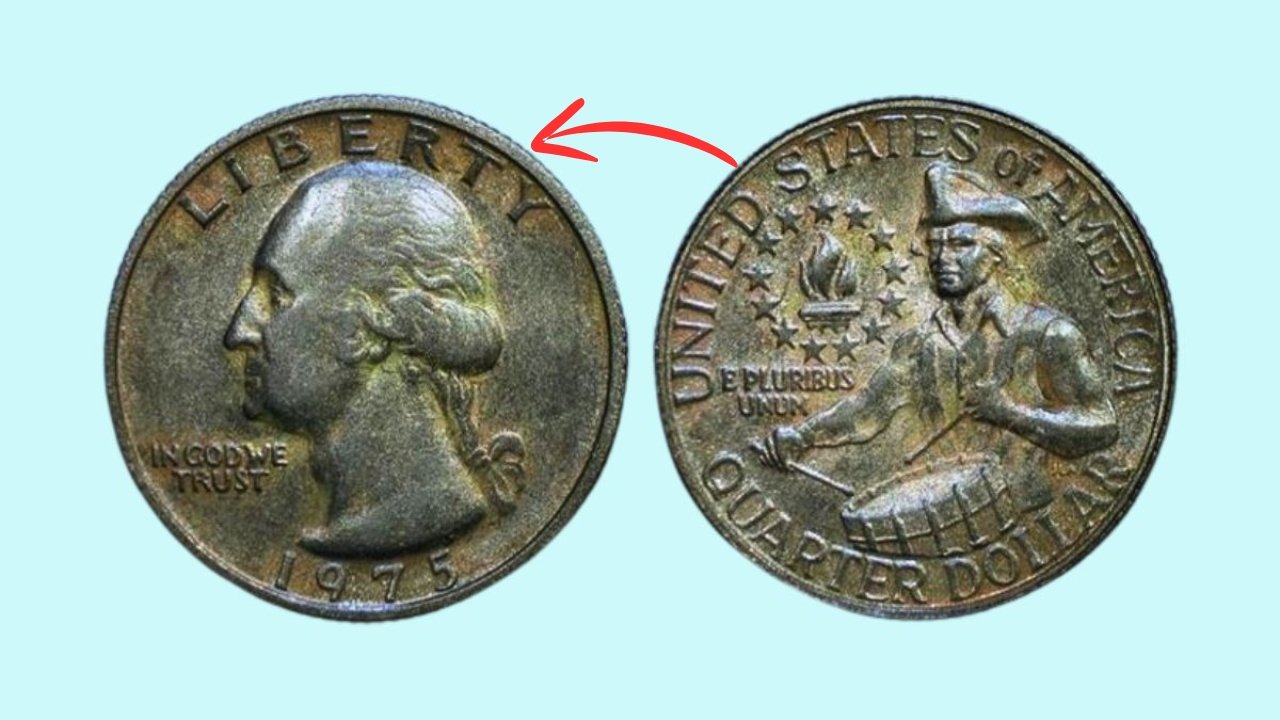Most of us don’t give much thought to the loose change rattling around in our pockets, but for coin collectors, those small, everyday coins can sometimes be worth a fortune. Some rare dimes and Bicentennial coins from America’s 200th birthday celebration are now worth hundreds—or even thousands—of times their original value.
Believe it or not, you might have one of these hidden gems sitting unnoticed in your coin jar right now. Let’s take a look at five particularly valuable coins that have collectors constantly checking their change.
1. The 1916-D Mercury Dime: The Holy Grail of Twentieth-Century Dimes
Back in 1916, when the Denver Mint struck Mercury dimes, they produced only 264,000 of them—a shockingly low number compared to the millions minted at other facilities that year. This makes the 1916-D Mercury Dime one of the most prized dimes among collectors today.
Jack Wilson, a rare coin dealer with over thirty years of experience in Philadelphia, explains why this particular dime is so sought after: “The ‘16-D Mercury is the key date in one of America’s most beloved coin series. It’s incredibly scarce, and Adolph Weinman’s beautiful design only adds to its appeal.”
Even well-worn examples sell for $1,000 to $2,000, while pristine, uncirculated specimens have fetched over $200,000 at auction.
And here’s the exciting part—you don’t need to be a seasoned collector to find one. Sarah Metcalf, a schoolteacher from Oregon, discovered a 1916-D Mercury Dime in a roll of dimes she got from her bank. “I almost couldn’t believe it when I spotted the ‘D’ mintmark,” she said. “It was pretty worn, but a dealer still paid me $1,200 for it. Not bad for ten cents!”
Just be cautious—some sellers try to fake the mintmark on more common 1916 dimes. If you think you’ve found one, get it authenticated by a professional grading service before celebrating too soon.
2. The 1942/1 Mercury Dime Overdate: A Wartime Minting Mistake
The early 1940s were a chaotic time at U.S. Mints as production ramped up during World War II. In the rush, an old 1941-dated die wasn’t fully removed before being re-engraved with 1942, leaving behind a visible overdate—a remnant of the “1” beneath the “2” in the date.
“It’s a tiny but fascinating piece of history,” says numismatic historian Eleanor Prescott. “The wartime conditions meant fewer skilled workers, which led to minting errors like this. You’re literally seeing history preserved in metal.”
Two varieties exist—one from Philadelphia and an even rarer version from Denver. The Philadelphia version typically sells for $500 to $800 in circulated condition, but uncirculated examples can top $10,000. The Denver version is even scarcer, with worn coins starting at $5,000.
Here’s the best part—you don’t need special equipment to spot the overdate. Just grab a magnifying glass and look closely at the “2” in 1942—if you see part of a “1” underneath, you might have a valuable coin on your hands.
3. The 1975 No-S Roosevelt Dime: A Modern Rarity
Not all valuable dimes are ancient. In 1975, the San Francisco Mint accidentally produced a small batch of proof dimes without the expected “S” mintmark. These were included in proof sets before the mistake was caught, creating an incredibly rare modern coin.
“The ‘75 No-S is unique because it’s a modern error, yet so few exist,” says Miguel Fernandez, a coin dealer in Austin, Texas. “We estimate fewer than 500 were ever made, and possibly as few as 300.”
Because it looks like an ordinary dime, most people wouldn’t give it a second glance—but authenticated examples sell for $15,000 to $25,000.
Where can you find one? Check old proof sets. These rare dimes were only released in collector’s proof sets, but many sets get broken up or mixed into regular collections over the years. “People inherit collections from relatives and don’t realize what they have,” Fernandez explains. “That’s how these treasures resurface.”
4. The 1976 Bicentennial Quarter: A Hidden Gem in Your Change
The Bicentennial quarter, featuring a colonial drummer to celebrate America’s 200th birthday, was minted in huge numbers—which means most are only worth face value. But there are special varieties that collectors are willing to pay big money for.
The most valuable is the 1976-S silver proof quarter with a doubled die obverse (DDO). On these coins, parts of the front design appear doubled due to a minting misalignment, especially in the words “LIBERTY” and “IN GOD WE TRUST.”
“What makes this quarter special is how it combines three things collectors love—Bicentennial designs, silver content, and a minting error,” says Thomas Gardner, an expert on Bicentennial coinage.
In top condition, these quarters sell for $400 to $800, and the very finest examples have even topped $2,000.
Even regular 1976 silver quarters—easily identified by their “S” mintmark and silver color—are worth $5 to $15. Many people unknowingly spend them, thinking they’re just regular quarters.
5. The 1976 Bicentennial Eisenhower Dollar: A Big Coin with Big Value
The Eisenhower dollar, featuring the Liberty Bell on the moon, is the largest coin in the Bicentennial series. Most are common, but certain varieties are worth serious money.










